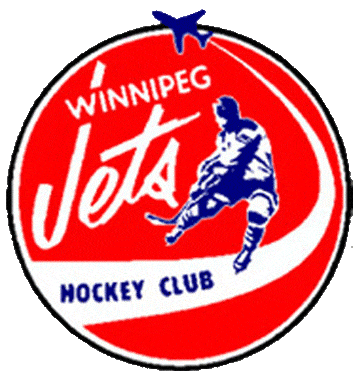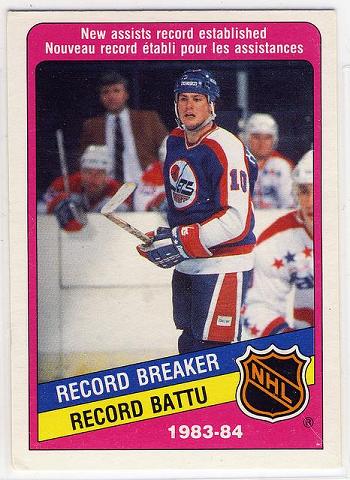This post was originally published at The Hockey Writers

So Winnipeg is back in the NHL party, is it?
Mark Chipman’s work for the people of Manitoba has been remarkable. He’s been a huge figure on the Winnipeg scene, from programs for First Nations youth, girls and other community groups to traditional boys’ hockey; from lobbying provincial and federal politicians for new support to athletics and the arts, to building the rink that the new NHL team will inhabit; from a huge role in the 1996 Save the Jets campaign to the May 31, 2011 purchase of the Atlanta Thrashers.
Thousands of hockey fans packed public spaces around Winnipeg during the evenings before the sale. Despite the frightening, and often hypocritical, presence of Gary Bettman, those fans deliriously watched the announcement on TV and online. There’s little doubt that the MTS Centre, the new smallest building in the league will sell out faster than Alex Ovechkin with a new sponsorship offer.
We don’t yet know the name or logo that will grace the front of the new Winnipeg entry to the NHL. We don’t even know which division they will play in – the Southeast? Really, Gary? Is this a good idea, even as a stop-gap solution? With so many things unknown, let’s focus on something we do know: the history of hockey in the Peg prior to the loss of the NHL franchise known as the Jets in 1996.
Without further ado, here are Seven Things about hockey in Winnipeg.
1. The Winnipeg Jets were a founding franchise in the World Hockey Association, a league set up to compete with the National Hockey League. The NHL had more than doubled in size from its Original Six era (to a whopping 14 teams), but Canadian fans were incensed that seven of the eight new teams – the only exception being the Vancouver Canucks – were in American cities. The Jets were one of four teams to successfully ice a team in all seven years that the WHA operated (1972–1979). Not surprisingly, it was these four franchises that survived the 1979 deal that folded the WHA and expanded the NHL to 21 teams.
2. When the Jets made eyes at Bobby Hull, the superstar left winger joked that he would play in Winnipeg for the outrageous price of $1,000,000. A million bucks today doesn’t sound like much, but in 1972 it was a princely sum. Hull was offered a ten-year contract worth $2.75 million, including a one million-dollar signing bonus. The Winnipeg Jets were thus the first pro sports team in history to pay a single player seven figures during a single season of play. Hull would forever after be known as “The Golden Jet”. Under Hull’s leadership, the Jets won the Avco World Trophy as WHA champs three times and finished as runner-up twice more during the league’s seven-year run.
3. Fans today won’t blink at the number of European names on those championship rosters, but the Jet organization was groundbreaking in the international scouting department. Count the first European captain of a North American team (Lars-Erik Sjöberg) among the team’s accomplishments. He was so good, he was captain twice – from 1975-78 in the WHA, and for their first season in the NHL, 1979-80. Some of the other EuroJets to make waves in North American hockey are still involved in the National Hockey League today: New York Rangers scout Anders Hedberg, New Jersey Devils scout Dan Labraaten, and famous dirty-hit victim Ulf Nilsson (fans still chant “Potvin sucks!” when the Islanders play at Madison Square Garden). The Rangers also hand out the Lars-Erik Sjöberg Award each year to the best rookie at training camp – Sjöberg died of cancer while working for the NYR in 1987.
4. Winnipeg has three Stanley Cups to its name. Nope, not the Jets, sadly – during their 17 years in the NHL, they made it past the first round just twice, and both times were paddled by the Edmonton Oilers (see #7 below for the main reason). The Winnipeg Victorias won three Stanley Cups when it was still a trophy up for challenges from club teams. In the first 21 years of its existence, the Cup was earned by 10 different teams through direct challenges or league championships. The Winnipeg Victorias were the only team outside of Ontario or Quebec to do so. In 1896, under captain Jack Armytage, they won Lord Stanley’s mug on February 14 in a 2-0 single elimination win over the Montreal Victorias. In 1901 and 1902, Dan Bain captained the club to its second and third Stanley Cup wins. Note: in 1902, the team only held the Cup for eight weeks. They defended their title in late January, but Montreal HC bested Winnipeg in a best-of-three challenge in mid-March to take the Cup back to Quebec. No Manitoba team has won the Stanley Cup since.
5. The Winnipeg Falcons won the very first Olympic gold medal for Ice Hockey, at the seventh modern Olympiad in 1920 in Antwerp, Belgium. At that time, there was not a separate event at which to hold Winter Games, so hockey and figure skating were held several months before other events to allow for outdoor skating to occur. Thus the hockey tournament was contested in April. The silver and bronze medals were won by national teams, from the United States and Czechoslovakia, respectively. The Falcons were the sole club team in the tournament, and beat all comers handily to claim the gold. As all but one of the team’s members were Canadian-born descendants of Icelandic immigrants, the national hockey program in Iceland to this day uses a falcon and a fire red Canadian maple leaf in its logo. Team Canada has worn throwback jerseys once, during the 2004 World Cup of Hockey.
 6. The Winnipeg Jets retired two jerseys before moving to Phoenix: Bobby Hull’s #9 and Thomas Steen’s #25. A curious omission is of course Dale Hawerchuk, who spent the first nine of his 16 NHL seasons with the Jets, and is one of only three players in franchise history to be inducted into the Hall of Fame. He scored 929 of his 1409 points in a Jet uniform, the most of any Winnipeg pro hockey player, including messieurs Hull and Steen. Sadly, Hawerchuk did not make it past the second round of the playoffs until his last NHL year, when his fourth team, the Philadelphia Flyers, were swept by Detroit in the Cup final. Internationally, Hawerchuk famously won the faceoff that set up the Gretzky-to-Lemieux winning goal in the 1987 Canada Cup final. Such is pan-Canadian admiration of the soft-spoken man from Toronto that a Quebec-based band named themselves Les Dales Hawerchuk in 2005. To be fair, the Phoenix Coyotes retired his #10 in 2007 – there is little doubt that the new Winnipeg team will similarly honour the man once next season gets under way.
6. The Winnipeg Jets retired two jerseys before moving to Phoenix: Bobby Hull’s #9 and Thomas Steen’s #25. A curious omission is of course Dale Hawerchuk, who spent the first nine of his 16 NHL seasons with the Jets, and is one of only three players in franchise history to be inducted into the Hall of Fame. He scored 929 of his 1409 points in a Jet uniform, the most of any Winnipeg pro hockey player, including messieurs Hull and Steen. Sadly, Hawerchuk did not make it past the second round of the playoffs until his last NHL year, when his fourth team, the Philadelphia Flyers, were swept by Detroit in the Cup final. Internationally, Hawerchuk famously won the faceoff that set up the Gretzky-to-Lemieux winning goal in the 1987 Canada Cup final. Such is pan-Canadian admiration of the soft-spoken man from Toronto that a Quebec-based band named themselves Les Dales Hawerchuk in 2005. To be fair, the Phoenix Coyotes retired his #10 in 2007 – there is little doubt that the new Winnipeg team will similarly honour the man once next season gets under way.
7. Manitoba Premier Greg Selinger quoted Wayne Gretzky during his turn at the podium. Not Hull, or Hawerchuk, or even Shane Doane or Keith Tkachuk, but Gretzky. He’s the Great One, but that is sacrilege to Jets fans. As a divisional rival for most of his time in Edmonton and Los Angeles, the Great One scored 38 goals and 108 points at Winnipeg Arena; that’s the most he put up in any building as a visitor. Quite succinctly, Wayne Gretzky feasted upon the Jets throughout his career. An interesting choice for a quote, Mr Premier, when Manitoba hopes to build a new tradition that includes more success. An interesting choice indeed.
Jason [at] puckedinthehead.com
